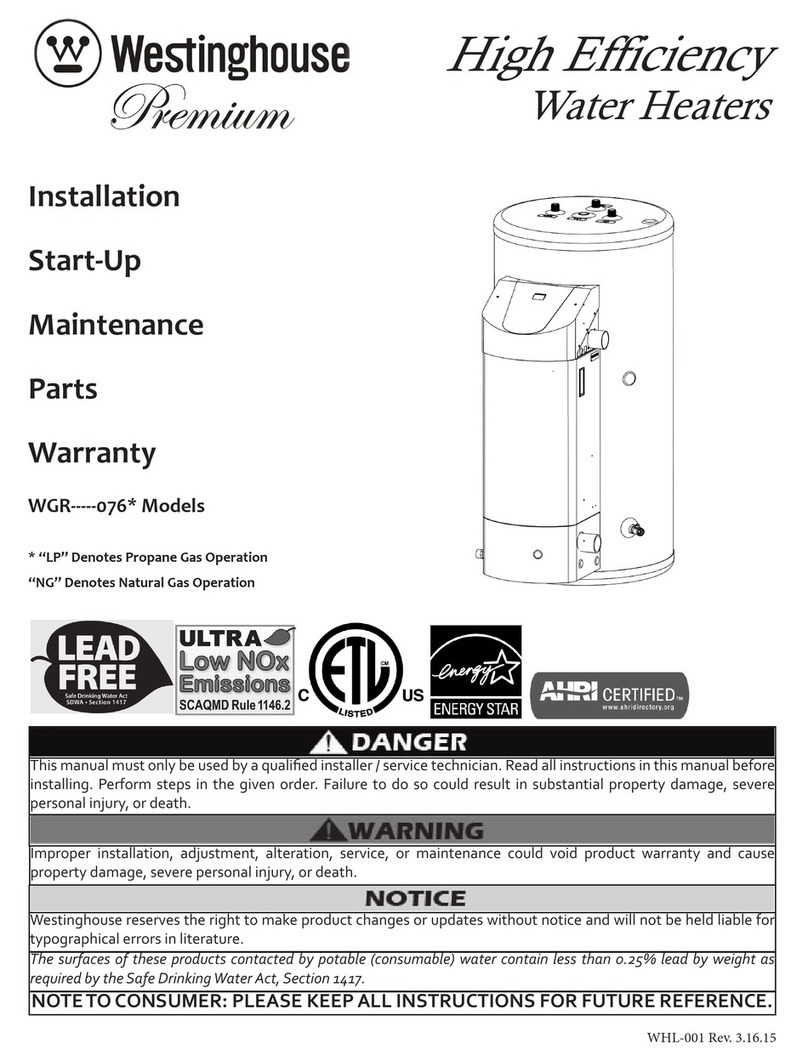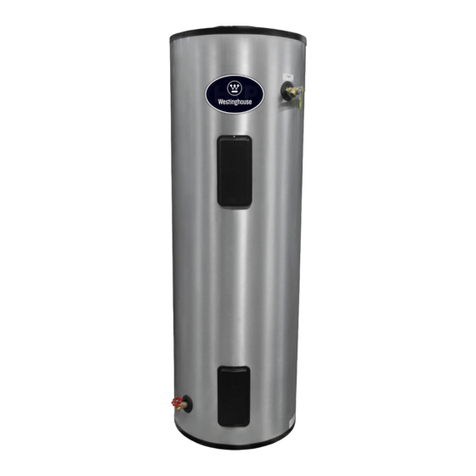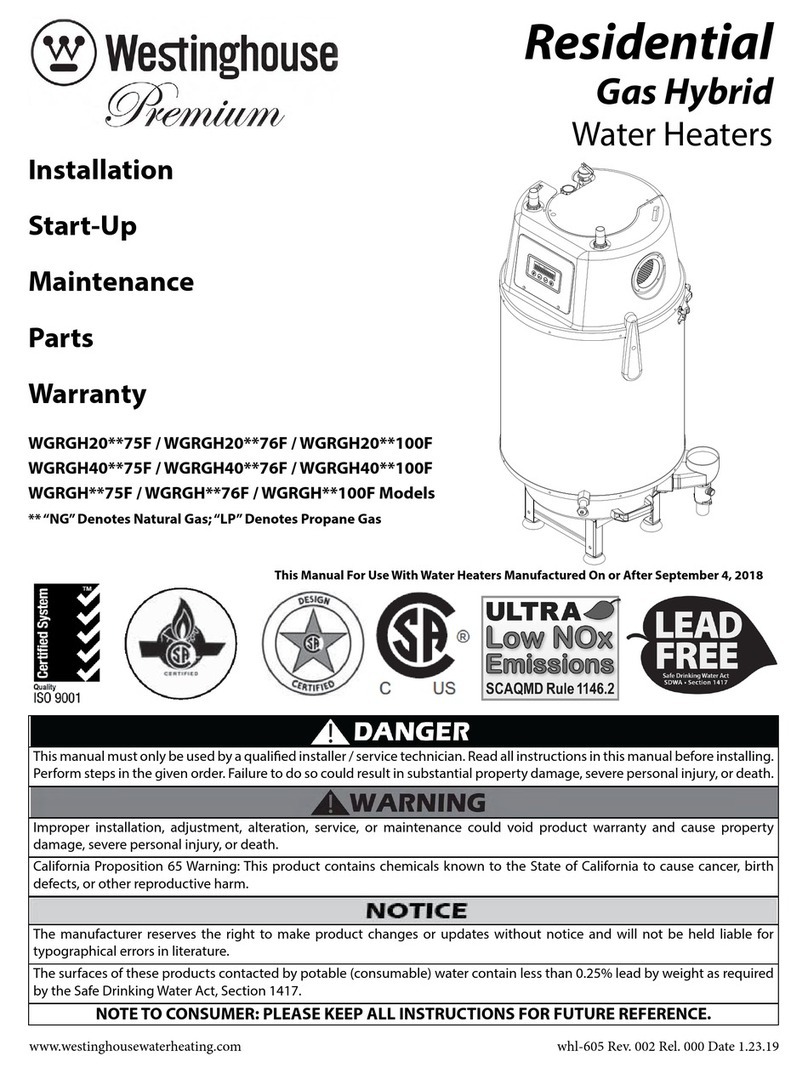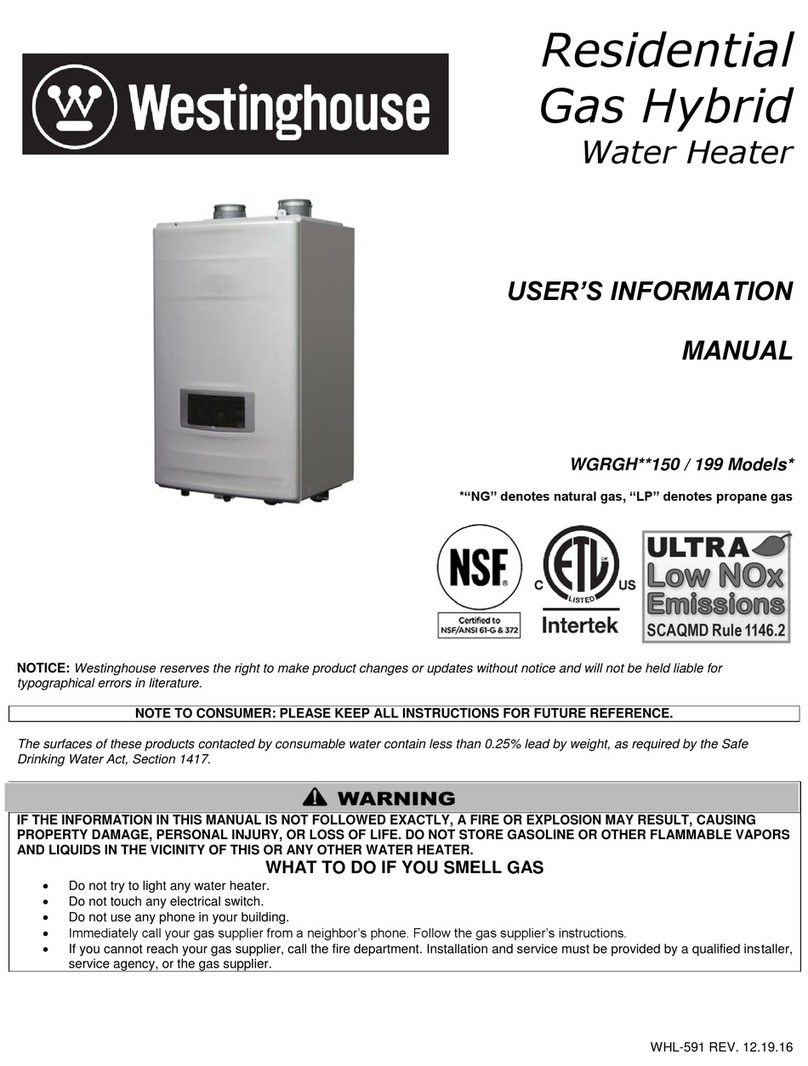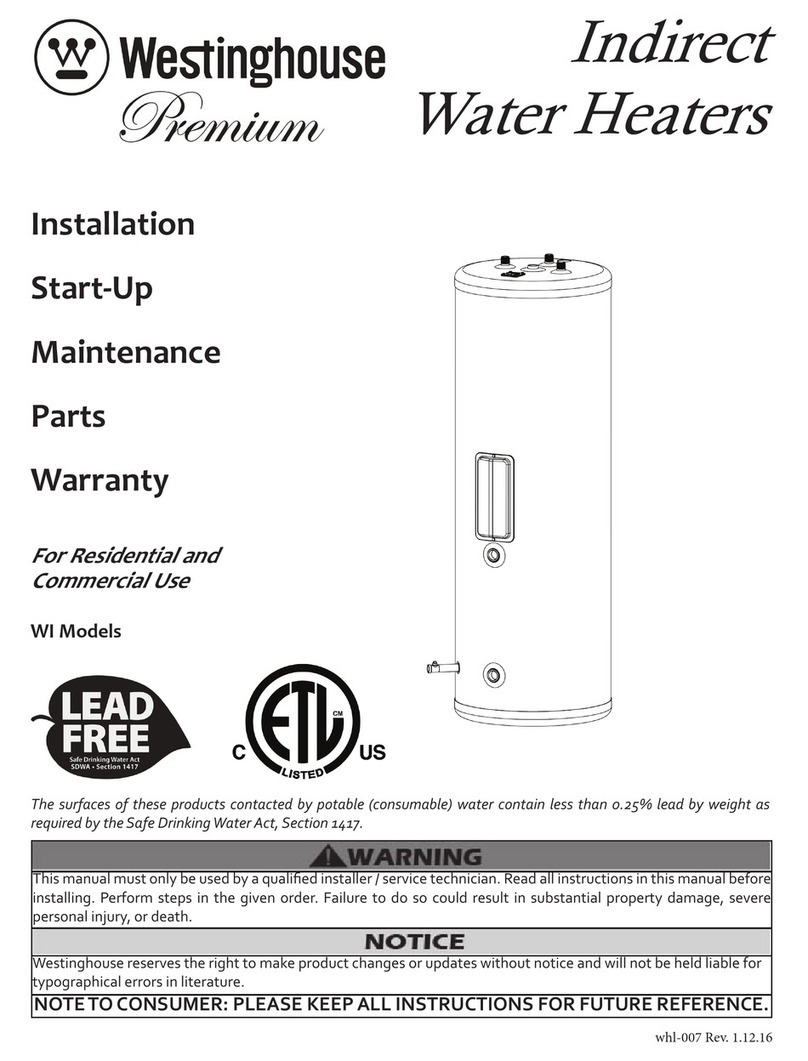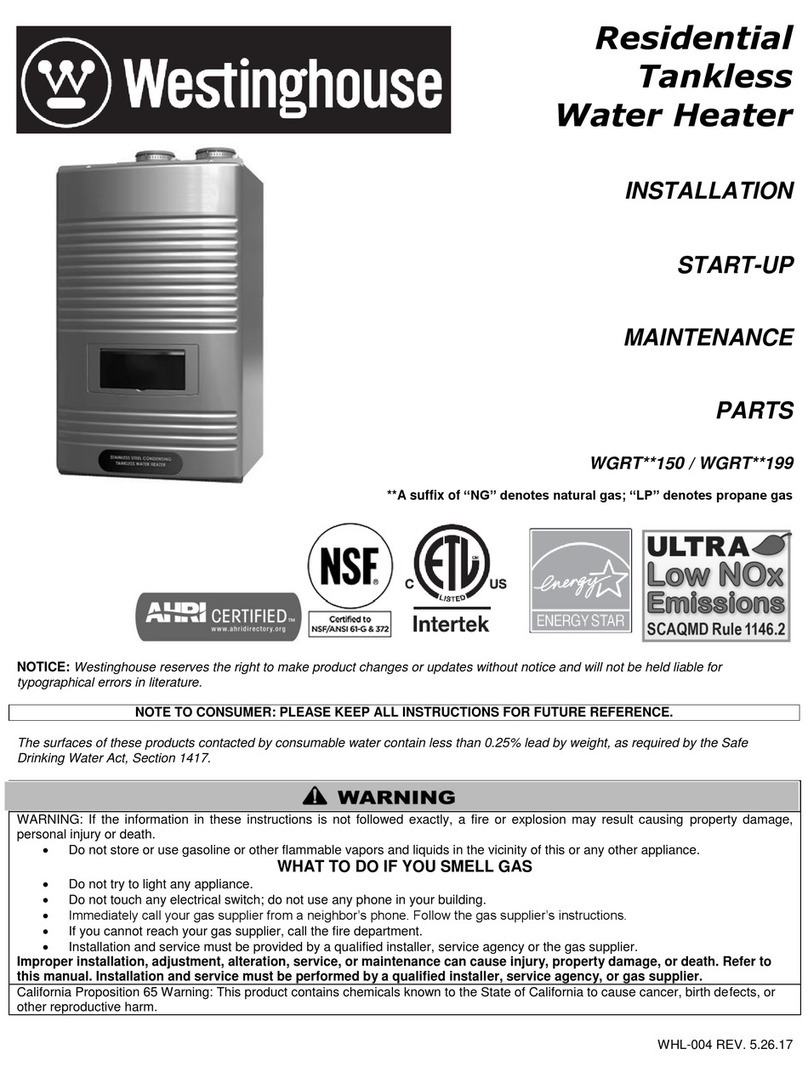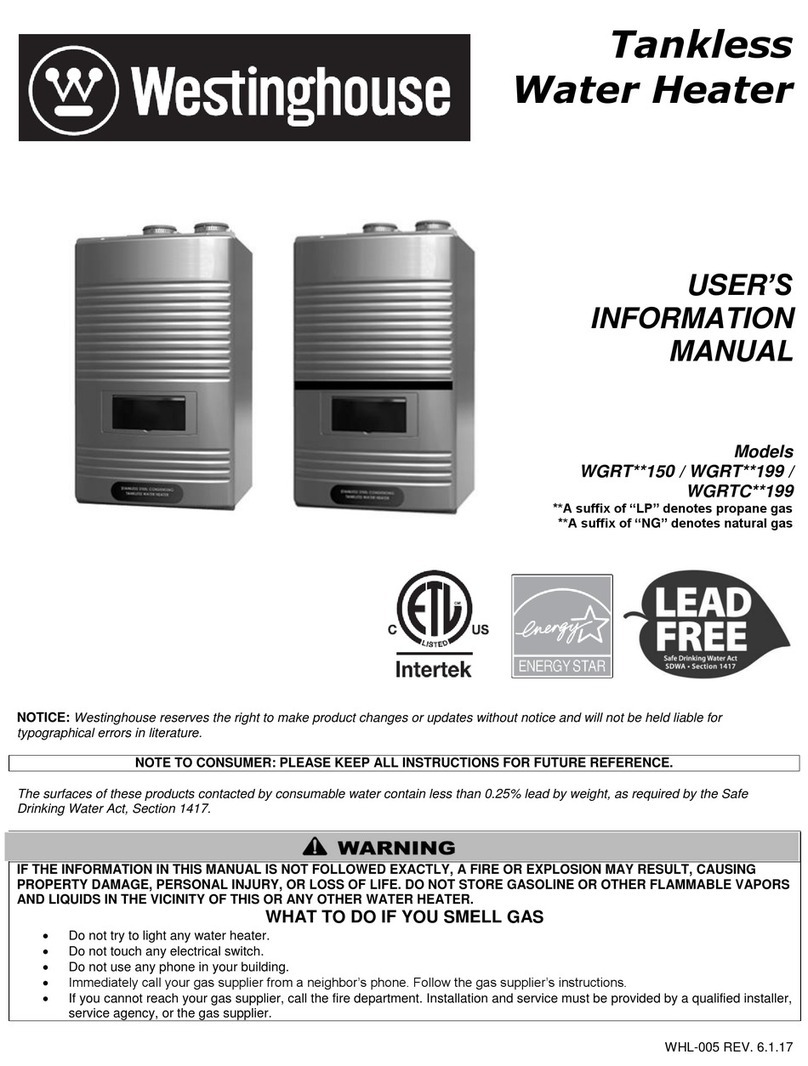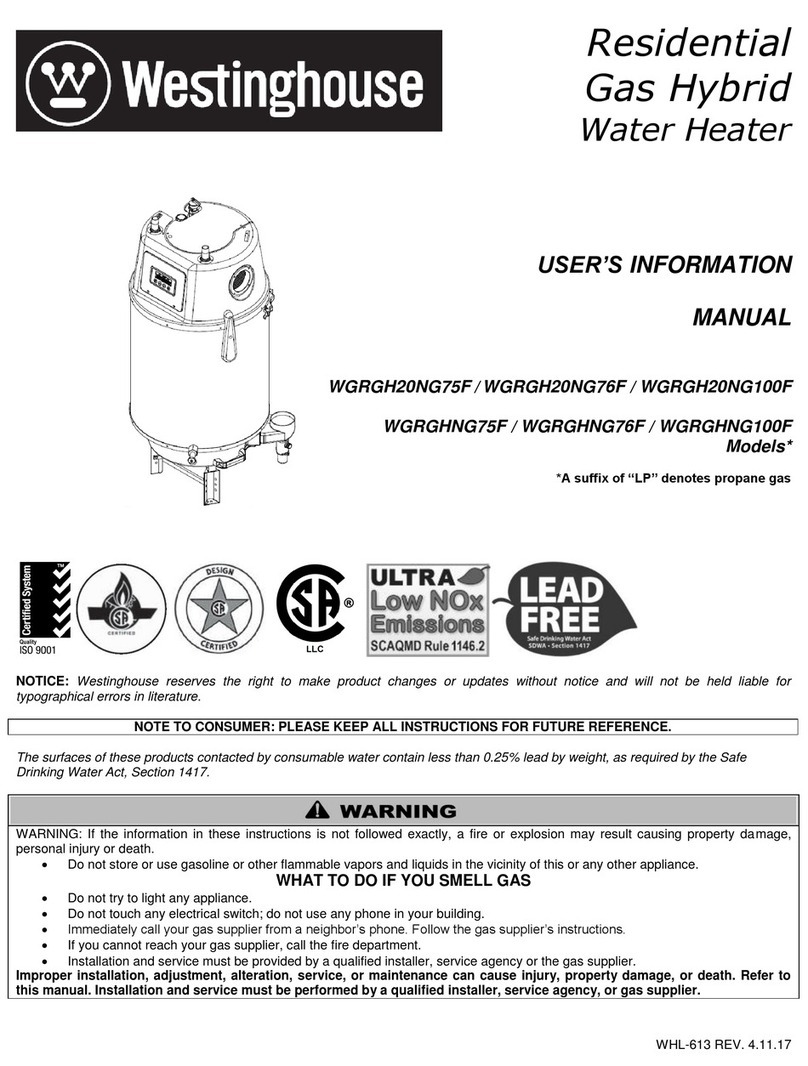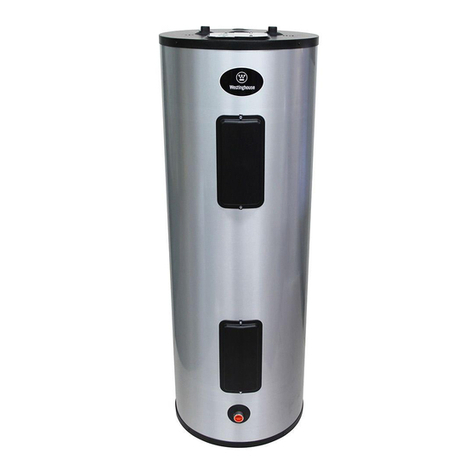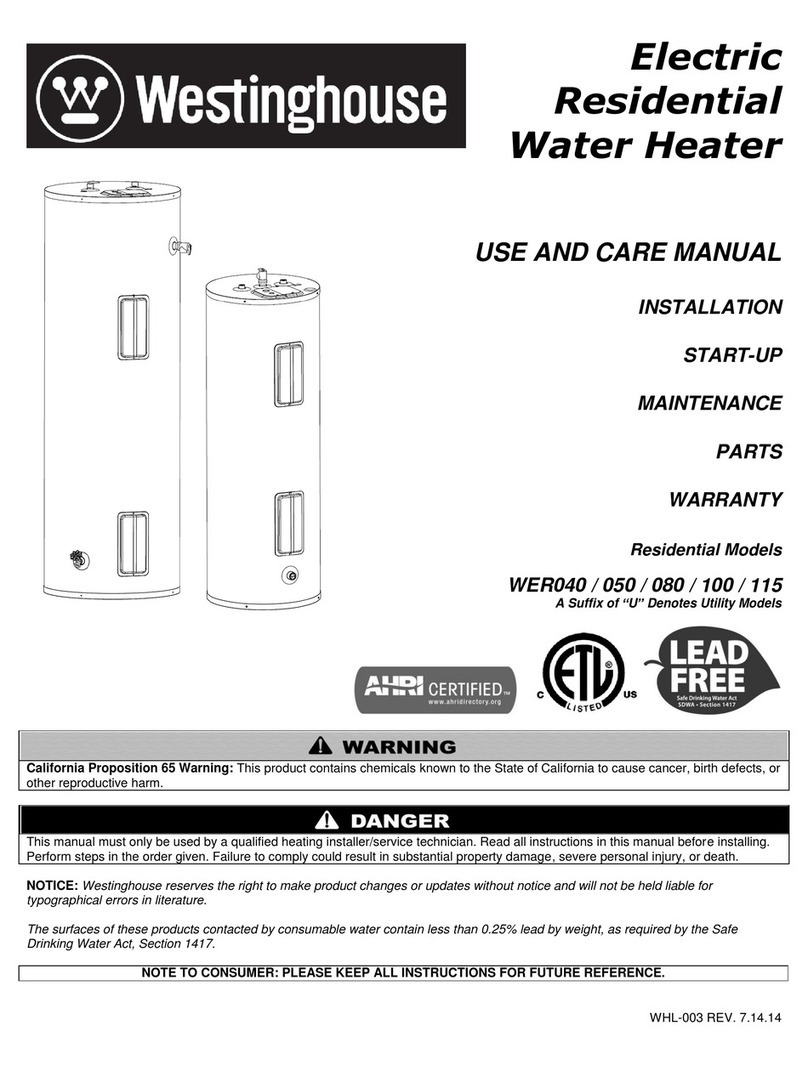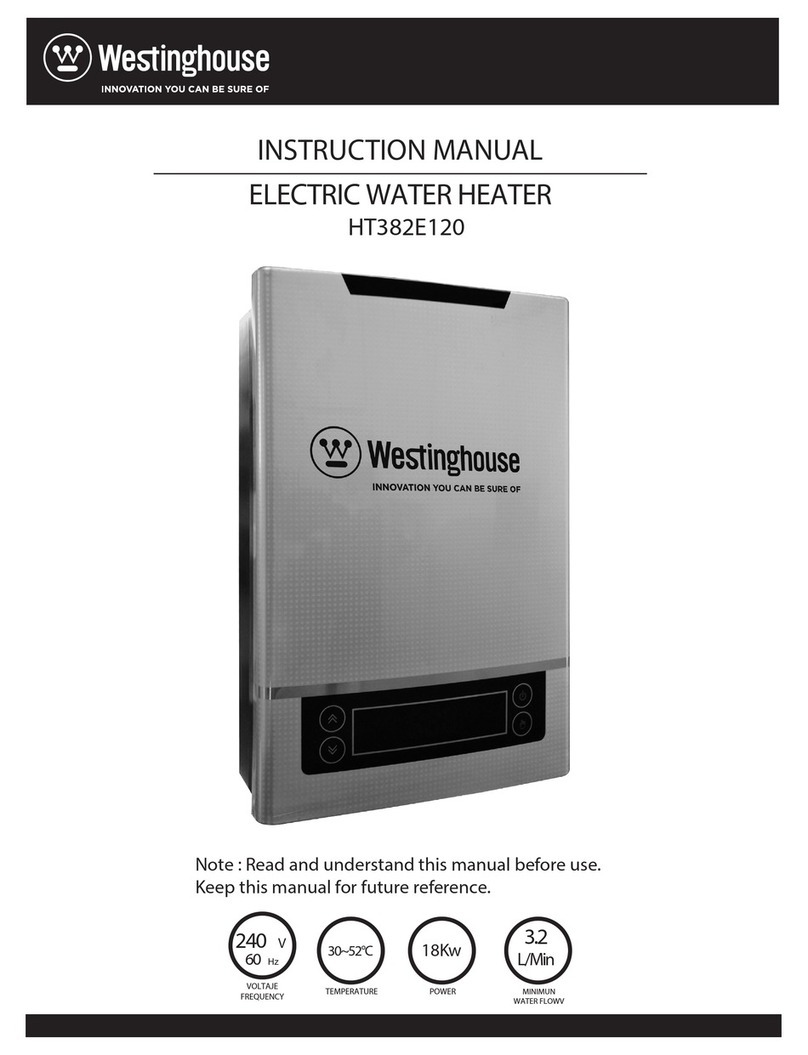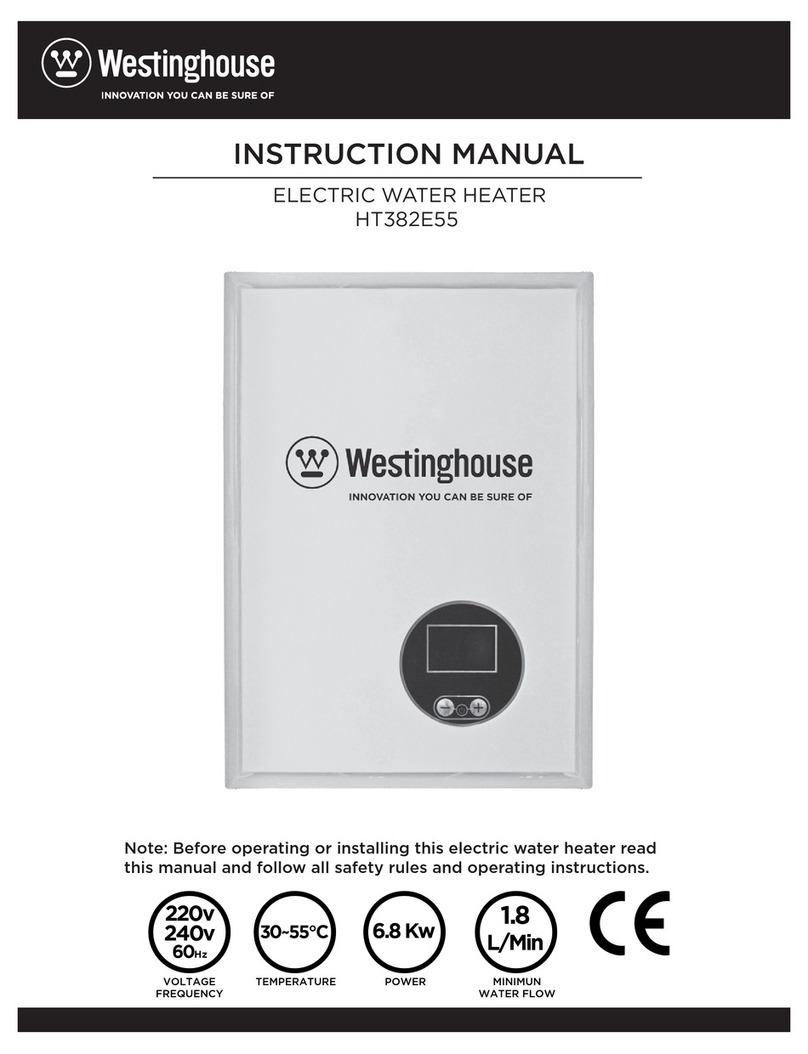
WHL-053 Rev. 00 Rel. 003 Date 7.21.17
8
Temperature and Pressure Gauge
Allows the user to monitor system temperature and pressure.
Electrical eld connections with terminal strips
The electrical cover allows easy access to the clearly marked line
voltage and low voltage terminal strips to facilitate wiring the boiler.
Condensate Collection System
This boiler is a high eciency appliance and will produce
condensate. The condensate collection system has a oat which
monitors condensate level and prevents condensate from backing
up into the combustion system. Inside the collection system is a
built in trap which seals the combustion system from the connected
drain. This condensate should be neutralized to avoid damage to
the drainage system or piping.
Flow Protection
The supplied ow switch is designed to protect the boiler during
low ow conditions. The boiler control also monitors ow through
the heat exchanger by monitoring the return and supply sensors
and will shut down the burner before overheating occurs.
0-10 Volt Input
Allows the installer to connect a BMS (Building Management
System) to control the boiler.
Condensate Flue Check System
The check system prevents heat exchanger exhaust from backing
up into the cabinet.
Pump Service Mode
Allows manual operation of pumps to commission system and
check pump operation.
C. Optional Equipment
Optional equipment available from Westinghouse (and Part #):
• Wall Mount Bracket (7450P-211)
• System Sensor (7250P-324)
• Indirect Tank Sensor (7250P-325)
• 3” Stainless Steel Vent Termination Kit (V1000)
• 4” Stainless Steel Vent Termination Kit (V2000)
• 6” Stainless Steel Vent Termination Kit (V3000)
• 2” PVC Concentric Vent Kit (KGAVT0501CVT)
• 3” PVC Concentric Vent Kit (KGAVT0601CVT)
• 3” Polypro Vent Kit (8400P-001)
• 3” Polypro Pipe
(33’length # 8400P-002, 49.5’ length # 8400P-003)
• Low Water Cut-O Kit (7450P-904)
• Manual Reset High Limit (7450P-910)
• Alarm System (to monitor any failure) (7350P-602)
• 928 PC Connection Kit with Software (7450P-330)
• Condensate Neutralizer (220/299/301 Models - 7450P-212,
399 Model - 7350P-611)
• Eighty Gallon Glass-Lined Storage Tank (GL-80)
• Eighty Gallon Stainless Steel Storage Tank (SSU-80CB)
VWH Circulator Kits
• 220 Model - Part # 7450P-248
• 299 / 301 Models - Part # 7450P-249
• 399 Model - Part # 7450P-250
NOTE: When using an optional system sensor, pipe insulation
must be wrapped around it to improve temperature measurement
accuracy and increase overall system eciency.
Part 3 - Prepare the Boiler
Remove all sides of the shipping crate to allow the boiler to be
moved into its installation location. The boiler is also equipped with
leveling feet that can be used to level the boiler properly on an un-
even location surface. If surface ooring is rough, take care when
moving the boiler into position, as catching the leveling feet could
damage the boiler.
Components (and Part #) included with the boiler:
• Temperature and Pressure Gauge (7250P-499)
• Pressure Relief Valve (7450P-254)
• Intake PVC Tee with Screens
• Exhaust PVC Coupling with Screens
• Outlet Combination Fitting (220 Model - 7450P-235, 299/301
Models - 7450P-236, 399 Model - 7450P-237)
• Flow Switch and Paddles (7250P-517)
• Installation Manual and Warranty
• CSD-1 Form
• H-3 Data Sheet
A. What’s in the Box
Remove all sides of the shipping crate of the boiler.
B. How the Boiler Operates
VWH® condensing technology intelligently delivers large amounts of
hot water while maximizing eciency. Outlined below are the features
of the system and how they operate:
Stainless Steel Heat Exchanger
The highly ecient stainless steel heat exchanger is designed to use
the cold water return from the storage tank and extract the last bit of
heat before it is exhausted.
Modulating Combustion System
The combustion system modulates the output of the burner during
operation to match system demand and achieve the control set point
while in operation. The set point can change by internal or external
signals to enhance the overall performance of the system.
Control
The integrated control system monitors the system and regulates fan
speed to control boiler output. This allows the boiler to deliver only the
amount of heat energy required and nothing more.
The control can regulate the output of multiple boilers through its
cascade system function. The cascade system is capable of connecting
up to eight boilers together in such a way that they function as one
boiler system. This allows for greater turn down ratios and provides
systematic control of the multiple boilers in an installation to minimize
downtime and maximize eciency.
The cascade system works by establishing one boiler as the master and
the other connected boilers as followers. The master boiler requires
a sensor to provide feedback on set point temperature in order to
adjust heating input from the connected boilers. Each cascaded boiler
will have its own pump to provide maximum ow and control heat
exchanger ow rate.
Text Display and Operational LED Light Indicators
The display allows the user to change system parameters and monitor
system outputs.
Gas Valve
Senses suction from the blower, allowing gas to ow only if powered
and combustion air is owing.
All Metal Integrated Venturi
Controls air and gas ow into the burner.
Burner
The high grade stainless steel burner uses premixed air and gas to
provide a wide range of ring rates.
Spark Ignition
The burner is ignited by applying high voltage through the system
spark electrode. The spark from the electrode ignites mixed gas o of
the burner.
Supply Water Temperature Sensor
This sensor monitors the boiler outlet water temperature (System
Supply).The control adjusts boiler ring rate so the supply temperature
will match the boiler set point.
Return Water Temperature Sensor
This sensor monitors boiler return water temperature (System Return).
Flue Sensor
Monitors ue temperature and adjusts ring rate.
